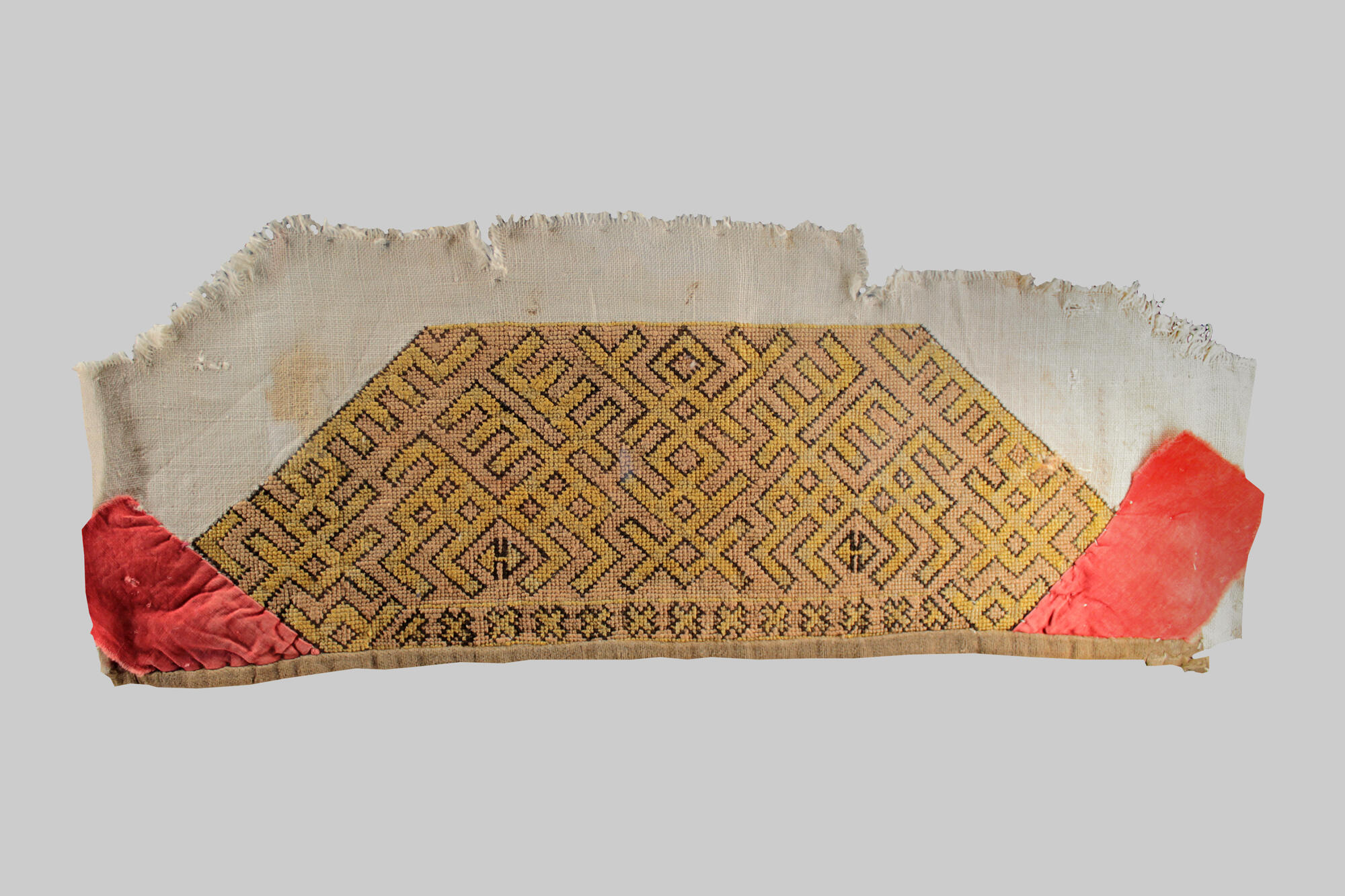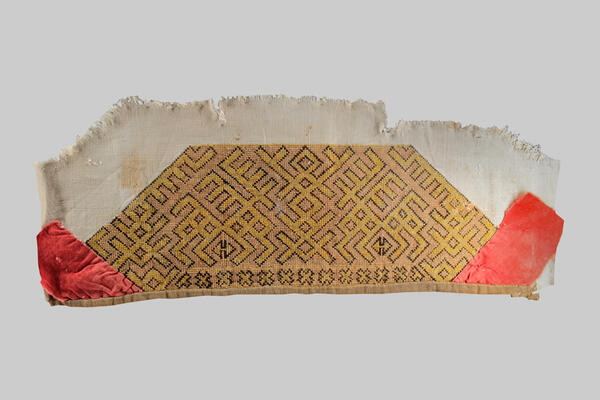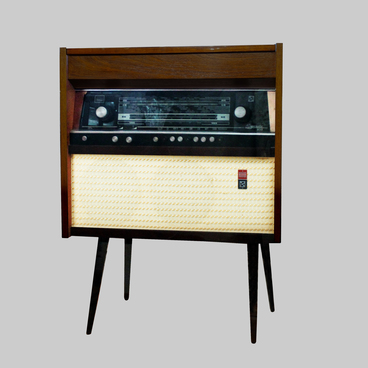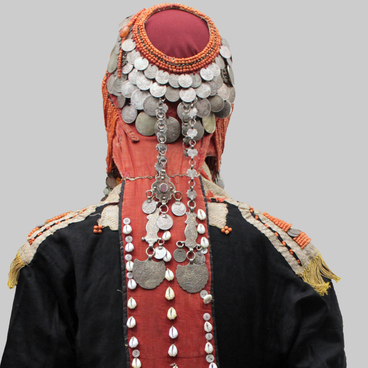A haraus is an elongated piece of homespun canvas, decorated with counted thread embroidery. According to researchers, in the past harauses were used as headbands by the Bashkirs. ts length was determined by the width of the canvas (from 30 - 40 cm), and the width could vary from 8-16 cm.
Harauses were embroidered with a slanting stitch - small, tightly adjoining diagonal stitches that cover the pattern inside the contour outlined by the emblazoning. Red or reddish-brown silk was used for the embroidery, and yellow, green, and blue colors were interspersed with that. The main color could sometimes be light brown or beige, and violet in rare cases. The contour of the drawing was laid down with emblazoning: black or dark brown woolen thread.
The embroidery on the haraus is located in the central part of the swath. The decorative composition fits into a triangle or trapezoidal figure.
The ornamentation on the haraus is represented by geometric motifs and heraldic compositions of a pair of animals, or birds, opposite each other that face a central figure. In traditional Bashkir embroidery, that can only be found on harauses. Typically, Bashkir embroideresses depicted stylized birds, but some harauses with images of horses and deer have survived.
In her book Bashkir Counted Thread Embroidery Ornamentation, Yelena Yevgenyevna Nechvaloda describes the features of the images of animals on harauses: ‘The back and belly of a deer also have “ruptures”, as a result of which their bodies have a “wasp waist”.’ The central figure of the composition can be interpreted either as a tree or as an anthropomorphic motif. In both cases, it is almost always capped off with a rhombus. ‘The tree was depicted….as a bush with a lush crown in the form of bifurcations that had a complex structure (in a composition together with deer)’.
The eight-pointed star is also one of the most popular motifs in the ornamentation on a haraus. Variations on this motif are often encountered that could be perceived as a stylized image of a human figure. A large group of
motifs takes very simple geometric shapes as its cornerstone: rhombuses, squares, and straight or slanting crosses. In combination with each other, these figures give rise to many derivative motifs.
By the 20th century, the purpose the haraus had was all but forgotten, even though they persisted as wedding gifts. For some time, in keeping with tradition, they remained in the bride”s dowry.
Harauses were embroidered with a slanting stitch - small, tightly adjoining diagonal stitches that cover the pattern inside the contour outlined by the emblazoning. Red or reddish-brown silk was used for the embroidery, and yellow, green, and blue colors were interspersed with that. The main color could sometimes be light brown or beige, and violet in rare cases. The contour of the drawing was laid down with emblazoning: black or dark brown woolen thread.
The embroidery on the haraus is located in the central part of the swath. The decorative composition fits into a triangle or trapezoidal figure.
The ornamentation on the haraus is represented by geometric motifs and heraldic compositions of a pair of animals, or birds, opposite each other that face a central figure. In traditional Bashkir embroidery, that can only be found on harauses. Typically, Bashkir embroideresses depicted stylized birds, but some harauses with images of horses and deer have survived.
In her book Bashkir Counted Thread Embroidery Ornamentation, Yelena Yevgenyevna Nechvaloda describes the features of the images of animals on harauses: ‘The back and belly of a deer also have “ruptures”, as a result of which their bodies have a “wasp waist”.’ The central figure of the composition can be interpreted either as a tree or as an anthropomorphic motif. In both cases, it is almost always capped off with a rhombus. ‘The tree was depicted….as a bush with a lush crown in the form of bifurcations that had a complex structure (in a composition together with deer)’.
The eight-pointed star is also one of the most popular motifs in the ornamentation on a haraus. Variations on this motif are often encountered that could be perceived as a stylized image of a human figure. A large group of
motifs takes very simple geometric shapes as its cornerstone: rhombuses, squares, and straight or slanting crosses. In combination with each other, these figures give rise to many derivative motifs.
By the 20th century, the purpose the haraus had was all but forgotten, even though they persisted as wedding gifts. For some time, in keeping with tradition, they remained in the bride”s dowry.



